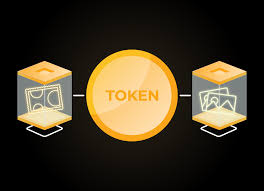Computer Network Models
Blog Credit: Trupti Thakur
Image Courtesy: Google
A communication subsystem is a complex piece of Hardware and software. Early attempts for implementing the software for such subsystems were based on a single, complex, unstructured program with many interacting components. The resultant software was very difficult to test and modify. To overcome such problem, the ISO has developed a layered approach. In a layered approach, networking concept is divided into several layers, and each layer is assigned a particular task. Therefore, we can say that networking tasks depend upon the layers.
Layered Architecture
- The main aim of the layered architecture is to divide the design into small pieces.
- Each lower layer adds its services to the higher layer to provide a full set of services to manage communications and run the applications.
- It provides modularity and clear interfaces, i.e., provides interaction between subsystems.
- It ensures the independence between layers by providing the services from lower to higher layer without defining how the services are implemented. Therefore, any modification in a layer will not affect the other layers.
- The number of layers, functions, contents of each layer will vary from network to network. However, the purpose of each layer is to provide the service from lower to a higher layer and hiding the details from the layers of how the services are implemented.
- The basic elements of layered architecture are services, protocols, and interfaces.
- Service: It is a set of actions that a layer provides to the higher layer.
- Protocol: It defines a set of rules that a layer uses to exchange the information with peer entity. These rules mainly concern about both the contents and order of the messages used.
- Interface: It is a way through which the message is transferred from one layer to another layer.
- In a layer n architecture, layer n on one machine will have a communication with the layer n on another machine and the rules used in a conversation are known as a layer-n protocol.
Let’s take an example of the five-layered architecture.
- In case of layered architecture, no data is transferred from layer n of one machine to layer n of another machine. Instead, each layer passes the data to the layer immediately just below it, until the lowest layer is reached.
- Below layer 1 is the physical medium through which the actual communication takes place.
- In a layered architecture, unmanageable tasks are divided into several small and manageable tasks.
- The data is passed from the upper layer to lower layer through an interface. A Layered architecture provides a clean-cut interface so that minimum information is shared among different layers. It also ensures that the implementation of one layer can be easily replaced by another implementation.
- A set of layers and protocols is known as network architecture.
Why do we require Layered architecture?
- Divide-and-conquer approach: Divide-and-conquer approach makes a design process in such a way that the unmanageable tasks are divided into small and manageable tasks. In short, we can say that this approach reduces the complexity of the design.
- Modularity: Layered architecture is more modular. Modularity provides the independence of layers, which is easier to understand and implement.
- Easy to modify: It ensures the independence of layers so that implementation in one layer can be changed without affecting other layers.
- Easy to test: Each layer of the layered architecture can be analyzed and tested individually.
OSI Model
- OSI stands for Open System Interconnection is a reference model that describes how information from a software application in one computer moves through a physical medium to the software application in another computer.
- OSI consists of seven layers, and each layer performs a particular network function.
- OSI model was developed by the International Organization for Standardization (ISO) in 1984, and it is now considered as an architectural model for the inter-computer communications.
- OSI model divides the whole task into seven smaller and manageable tasks. Each layer is assigned a particular task.
- Each layer is self-contained, so that task assigned to each layer can be performed independently.
Characteristics of OSI Model:
- The OSI model is divided into two layers: upper layers and lower layers.
- The upper layer of the OSI model mainly deals with the application related issues, and they are implemented only in the software. The application layer is closest to the end user. Both the end user and the application layer interact with the software applications. An upper layer refers to the layer just above another layer.
- The lower layer of the OSI model deals with the data transport issues. The data link layer and the physical layer are implemented in hardware and software. The physical layer is the lowest layer of the OSI model and is closest to the physical medium. The physical layer is mainly responsible for placing the information on the physical medium.
7 Layers of OSI Model
There are the seven OSI layers. Each layer has different functions. A list of seven layers are given below:
- Physical Layer
- Data-Link Layer
- Network Layer
- Transport Layer
- Session Layer
- Presentation Layer
- Application Layer
1) Physical layer
- The main functionality of the physical layer is to transmit the individual bits from one node to another node.
- It is the lowest layer of the OSI model.
- It establishes, maintains and deactivates the physical connection.
- It specifies the mechanical, electrical and procedural network interface specifications.
Functions of a Physical layer:
- Line Configuration: It defines the way how two or more devices can be connected physically.
- Data Transmission: It defines the transmission mode whether it is simplex, half-duplex or full-duplex mode between the two devices on the network.
- Topology: It defines the way how network devices are arranged.
- Signals: It determines the type of the signal used for transmitting the information.
2) Data-Link Layer
- This layer is responsible for the error-free transfer of data frames.
- It defines the format of the data on the network.
- It provides a reliable and efficient communication between two or more devices.
- It is mainly responsible for the unique identification of each device that resides on a local network.
- It contains two sub-layers:
- Logical Link Control Layer
- It is responsible for transferring the packets to the Network layer of the receiver that is receiving.
- It identifies the address of the network layer protocol from the header.
- It also provides flow control.
- Media Access Control Layer
- A Media access control layer is a link between the Logical Link Control layer and the network’s physical layer.
- It is used for transferring the packets over the network.
TCP/IP model
- The TCP/IP model was developed prior to the OSI model.
- The TCP/IP model is not exactly similar to the OSI model.
- The TCP/IP model consists of five layers: the application layer, transport layer, network layer, data link layer and physical layer.
- The first four layers provide physical standards, network interface, internetworking, and transport functions that correspond to the first four layers of the OSI model and these four layers are represented in TCP/IP model by a single layer called the application layer.
- TCP/IP is a hierarchical protocol made up of interactive modules, and each of them provides specific functionality.
Here, hierarchical means that each upper-layer protocol is supported by two or more lower-level protocols.
Functions of TCP/IP layers:
Network Access Layer
- A network layer is the lowest layer of the TCP/IP model.
- A network layer is the combination of the Physical layer and Data Link layer defined in the OSI reference model.
- It defines how the data should be sent physically through the network.
- This layer is mainly responsible for the transmission of the data between two devices on the same network.
- The functions carried out by this layer are encapsulating the IP datagram into frames transmitted by the network and mapping of IP addresses into physical addresses.
- The protocols used by this layer are ethernet, token ring, FDDI, X.25, frame relay.
Internet Layer
- An internet layer is the second layer of the TCP/IP model.
- An internet layer is also known as the network layer.
- The main responsibility of the internet layer is to send the packets from any network, and they arrive at the destination irrespective of the route they take.
Following are the protocols used in this layer are:
IP Protocol: IP protocol is used in this layer, and it is the most significant part of the entire TCP/IP suite.
Following are the responsibilities of this protocol:
- IP Addressing: This protocol implements logical host addresses known as IP addresses. The IP addresses are used by the internet and higher layers to identify the device and to provide internetwork routing.
- Host-to-host communication: It determines the path through which the data is to be transmitted.
- Data Encapsulation and Formatting: An IP protocol accepts the data from the transport layer protocol. An IP protocol ensures that the data is sent and received securely, it encapsulates the data into message known as IP datagram.
- Fragmentation and Reassembly: The limit imposed on the size of the IP datagram by data link layer protocol is known as Maximum Transmission unit (MTU). If the size of IP datagram is greater than the MTU unit, then the IP protocol splits the datagram into smaller units so that they can travel over the local network. Fragmentation can be done by the sender or intermediate router. At the receiver side, all the fragments are reassembled to form an original message.
- Routing: When IP datagram is sent over the same local network such as LAN, MAN, WAN, it is known as direct delivery. When source and destination are on the distant network, then the IP datagram is sent indirectly. This can be accomplished by routing the IP datagram through various devices such as routers.
Blog By: Trupti Thakur

12
JunComputer Network Models
Jun 12, 2023Recent Blog
India’s First Creator LandMay 21, 2025
Tokenization – An Initiative By RBIMay 20, 2025
The BioMetric E-PassportsMay 19, 2025
AI HallucinationsMay 16, 2025
India’s Steps Into 6GMay 15, 2025




